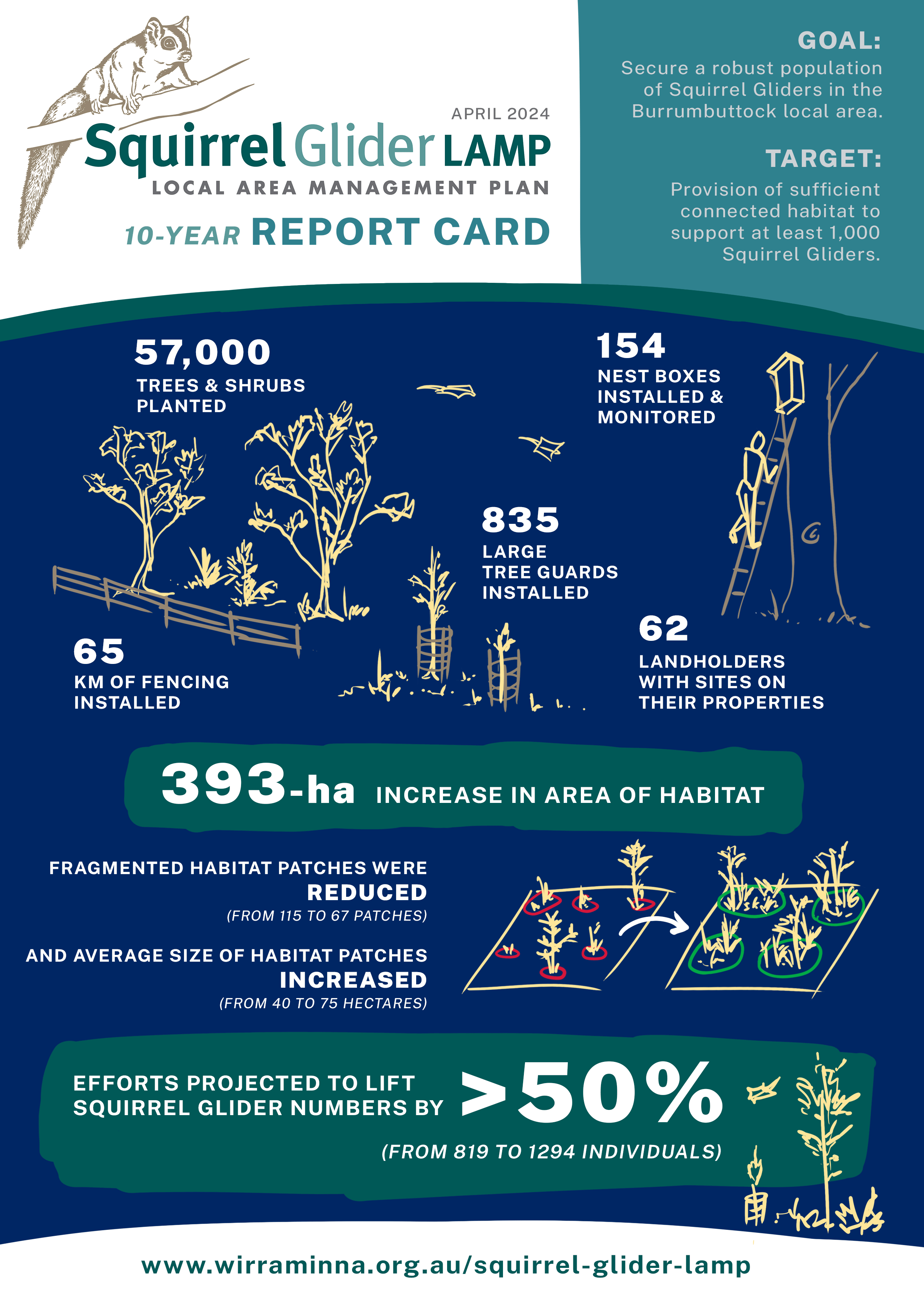Squirrel Glider Local Area Management Plan
The purpose of Burrumbuttock Squirrel Glider Local Area Management Plan (LAMP) is to secure viable populations of squirrel gliders in the Murray catchment through community action. A LAMP is essentially a map that shows what on-ground work needs to be done in the area to ensure the viability of the local squirrel glider population.
The LAMP process uses the local community to help steer the planning and implementation of threatened species conservation. The local community is involved throughout the process and they help determine the extent of on-ground works that can be implemented to support local populations of threatened species. Ultimately, the process devolves responsibility for implementing and managing the LAMP to the community.
The community of Burrumbuttock was chosen for a LAMP as it contains the threatened and iconic squirrel glider, significant habitat change had occurred in the area (placing the local squirrel gliders at risk of extinction), there was a long history of the community undertaking works to benefit squirrel gliders, and the community had identified Burrumbuttock as a priority site for squirrel glider conservation.
The Squirrel Glider LAMP project is a partnership between Petaurus Education Group Inc., Murray Local Land Services, the Office of Environment and Heritage, Greater Hume Shire, West Hume Landcare, Wirraminna Environmental Education Centre and Burrumbuttock landholders. The project has been funded by the Australian Government’s National Landcare Program and Catchment Action NSW and currently proudly supported by the NSW Government through its Environmental Trusts programs (Save our Species Contestable grants and Restoration and Rehabilitation grants)
LAMP ResourcesSQUIRREL GLIDERS
Squirrel Gliders (Petaurus norfolcensis) are a mid-sized possum reliant on tree hollows for shelter and nesting. Habitat fragmentation has contributed to their decline in the Murray region and subsequent listing as a threatened species.
Large gaps between trees and patches of vegetation affect the movement of gliders across the landscape, interrupting their breeding and feeding activities.
Squirrel Gliders may be mistaken for the Sugar Glider (Petaurus beviceps). However, Squirrel Gliders are larger and have a much bushier tail and whiter belly. Squirrel Gliders are more common in the Burrumbuttock area.
Planned activities
This project focuses on:
- Continuing to roll-out the on-ground works program by engaging one-on-one with Burrumbuttock landholders in target areas.
- Fencing and revegetation to increase habitat and connections across the landscape
- Replacing barbed wire with plain wire in high risk areas where squirrel gliders can easily get tangled and perish.
- Installing nest boxes in habitat where trees are less than 150 years old and lack suitable hollows.
- Planting individual trees with large wire mesh stock-proof tree guards to create “stepping-stones” between large old trees and habitat patches that are too far apart for gliders to safely move between.

Achievements

The Squirrel Glider Habitat Management Guide is also available from the project officer (see contact details below).
Have you seen a squirrel glider?
As part of the planning process for the project we are keen to collate information from landholders about squirrel glider sightings regardless of whether it was a recent sighting or from a number of years ago.
Squirrel gliders often live on private land, so the assistance of landholders is very important to help us to understand their distribution.
Complete a squirrel glider survey
The form can be submitted directly to Lou Bull or you can print it out and post the completed form to Petaurus. The data collected from this form helps guide the planning of targeted on-ground works.
COMMUNITY SURVEY FORMHow you can find Squirrel Gliders
